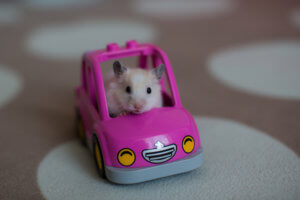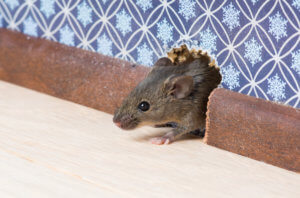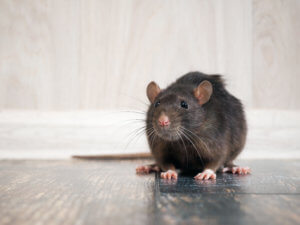Instinctually, we think of rats as a lesser life form and have reduced them to the category of a pest. When we think of dealing with pests at a high level, we think of using some sort of spray or repellent (i.e. moth balls, peppermint oil, dryer sheets, etc.). With this train of thought, we are inappropriately grouping rats in with insects which will lead to individual methods of treatment that have a low probability of success.
Rats (to give them credit..and I promise this will be the last time) are intelligent (though instinctual) and need a plan of pest control that factors in their behaviors and thoughts processes. Simply spraying some smelly stuff isn’t going to scare them away. You need to mess with their psyche! This is exactly why a spray/repellant needs to be just one part of a larger strategy for fending off the vermin.
Think of rat repellent as a tool to confuse the rat. Rats feel safe when they can smell their urine. This is why rats mark their paths, eating spots, burrows, food, children, mates, etc. with their urine. Introducing strong smells along normal traveling paths, eating spots and such, confuses the rat on whether that particular spot/area is marked as safe or not. If the rat cannot detect their urine, it will make them feel unsafe. This is why it is super important to be spraying in spots that are most likely to have rat traffic.
Now please don’t completely eliminate a rodent spray or repellant from your strategy. These do work but just shouldn’t be used by themselves. I personally use the Rodent Defense which is essentially a combination of peppermint oil, garlic oil, a few other natural oils and water.
I spray a few times a week in different areas of both of my car’s engine compartments. The label on the back will say to spray an entire ring of it around your car, but I found that to be pretty wasteful.
As a part of my larger, overarching strategy, I use Rodent Defense in a combination with the Tomcat Rat Snap traps, leaving my hood up, and bright lights. I go into more detail on my strategy on the Home page and in the article So, I’ve Successfully Evicted the Vermin. Now What?
I hope this has been helpful and will make you think twice about using just a repellant to solve a rodent issue in your car.
Any questions/comments, drop a note!
-Rat King Dave
This page contains Amazon Affiliate links. I will receive a commission for any purchases made through these links, though at no additional cost to you.








When my car was made they started using plant based materials instead of plastic for things like panels and wiring. They stopped after a couple of years because it turned out rats liked this new material.
My problem is I normally use my car one day per week, so that gives rats plenty of time to settle in.
I have been using regular rat bait in my car engine bay. It works but takes up to a week to kill and the rats can do a lot of damage in that time.
And if I stop using baits they are back in no time, so checking and baiting is a daily exercise – very annoying.
I will keep up the baits and try spays but also put regular rat traps next to the tires and probably run the engine for a few minutes every morning to make things hot.
I will also install a sonic noise flashing light unit.
Hi Ira! I apologize for the delay in my response. I resigned from the throne for few years, but I am back to fulfill my duties as Rat King! If your car was built in the last 10-15 years then yes, there are most likely at least some part made with plant-based materials. There are cases though of much older cars where plant based materials were used. It is true that rodents love plant based car parts. I can see how your issue can compound if your car is sitting for up to a week in-between each use. Personally, I would not be using bait in the engine compartment as that may be attracting them there. Bait is best used in a bait station outside somewhere. I think your best option would be to leave your hood up for the next 24 hours after you drive your car each time and then check under the hood once a day after. If you find signs of new rodents in one of your checks then continue to leave the hood up. Rodent’s mainly go into the engine compartment for shelter so you just need to take that away. I hope this helps. I am around now if you have any further questions. Thank you! RKD
RODENT RAT SPRAY EFFECTED CAR AC
Hi Raju! This is the second time someone has commented on this recently and appreciate you sharing. I guess this is a note to the community here that you shouldn’t spray into the AC ducts. I would just spray a few times around the engine compartment and then just repeat ever day or so. Thanks again for sharing. RKD